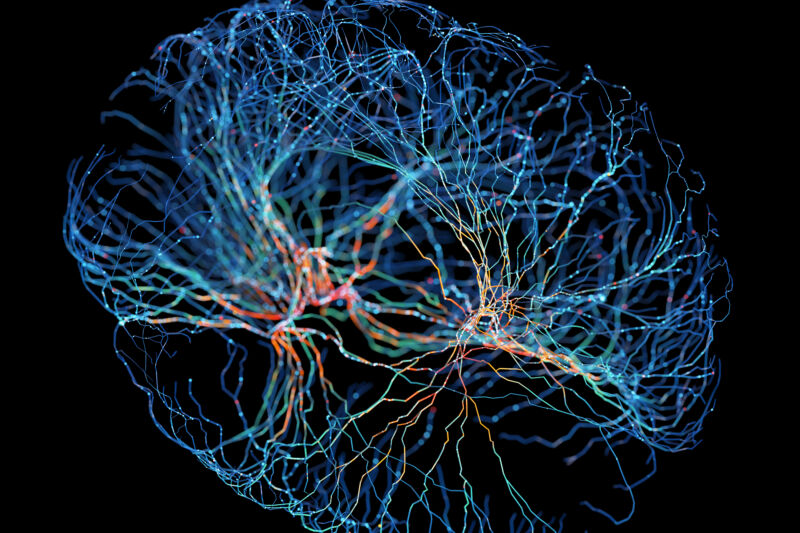

Is the future of computing biological?
source link: https://arstechnica.com/science/2023/03/is-the-future-of-computing-biological/
Go to the source link to view the article. You can view the picture content, updated content and better typesetting reading experience. If the link is broken, please click the button below to view the snapshot at that time.

Gray matter —
Is the future of computing biological?
Human brains have a leg up on computers—so what’s the next logical step?
Doug Johnson - 3/1/2023, 4:30 PM

Trying to make computers more like human brains isn’t a new phenomenon. However, a team of researchers from Johns Hopkins University argues that there could be many benefits in taking this concept a bit more literally by using actual neurons, though there are some hurdles to jump first before we get there.
In a recent paper, the team laid out a roadmap of what's needed before we can create biocomputers powered by human brain cells (not taken from human brains, though). Further, according to one of the researchers, there are some clear benefits the proposed “organoid intelligence” would have over current computers.
“We have always tried to make our computers more brain-like,” Thomas Hartung, a researcher at Johns Hopkins University’s Environmental Health and Engineering department and one of the paper’s authors, told Ars. “At least theoretically, the brain is essentially unmatched as a computer.”
It’s alive (kind of?)
Organoids are small pieces of tissue grown in the lab to resemble whole organs; they contain many of an organ's specialized cell types and some internal structures. They enable researchers to perform studies without needing to do human or animal testing. Hartung and various colleagues have been working with organoids grown from human brain cells. He started growing them back in 2012 from human skin samples that he reprogrammed into a stem cell-like state. The organoids are small, roughly the size of the point of a pen, but they contain many neurons—around 50,000—and various other structures that allow them to learn and remember.
According to Hartung, these cells could be used to create computers with several benefits. For one, such machines would result in less energy consumption relative to conventional computers—and supercomputers in particular. Human brains learn faster and use less energy than computers do. The game-playing algorithm AlphaGo, for instance, was trained on data from 160,000 amateur games of Go. It would take an incredibly long amount of time for a human to play these games, yet humans still perform admirably at Go. Additionally, the human brain is very good at storing data—it’s estimated to be able to store 2.5 million gigabytes.
AdvertisementIn theory, organoid computers would also take up less space. In the future, they could have a three-dimensional structure—as opposed to just something on a Petri dish—meaning that their cell density could increase considerably, and more connections between the neurons could form. Finally, while wholly non-human computers are better at processing large amounts of data, human brains are better at making logical decisions—like being able to quickly identify an animal.
Sukhpal Gill, an assistant professor of electronic engineering and computer science at Queen Mary University of London, similarly sees the potential of this kind of computing. He noted that energy consumption presents a big limitation for computing, AI, and machine learning. “Human brain cells, on the other hand, integrate such tasks with ease and also have exceptionally low energy requirements, needing just a relatively small volume of a nutrient-rich solution to function,” he told Ars.
A long road ahead
However, there’s a good deal of work ahead before these biocomputers can become a reality. One of the most pressing issues is size. The organoids would need to increase from 50,000 to closer to 10 million cells, he said. But it’s hard to sustain these cells at a size larger than half a millimeter because the oxygen and nutrients fed to them can’t reach the center easily, meaning you could have a “rotten core” on your hands. One solution might be perfusion, or channeling liquid into the organoid's interior, Hartung said.
Researchers also need to find new ways of communicating with the organoids to exchange information with them, much like how a computer works. Improving their memory is also vital. Right now, brain organoids can only hold short-term memory. You could, for instance, train them to play Pong, but they will forget everything the next day, Hartung said. Some of this likely has to do with the fact that the organoids lack microglial cells, he said. These are a kind of immune cell that also appear in the brain and perform synaptic pruning, or killing off superfluous synapses, allowing healthy brains to function normally.
Then there are also ethical questions about creating and growing brain cells and about whether or not these organoids would be alive—if they could develop a kind of consciousness or experience pain. As such, Hartung notes that his team has been partnering with bioethicists to assess and ensure everything is done in a way that’s not morally terrifying.
Frontiers, 2023. DOI: 10.3389/fsci.2023.1017235 (About DOIs)
Recommend
About Joyk
Aggregate valuable and interesting links.
Joyk means Joy of geeK